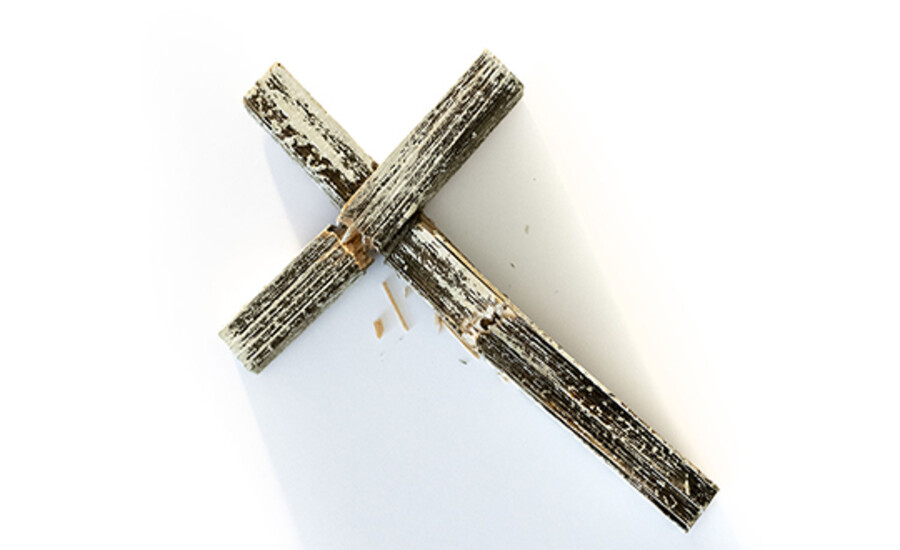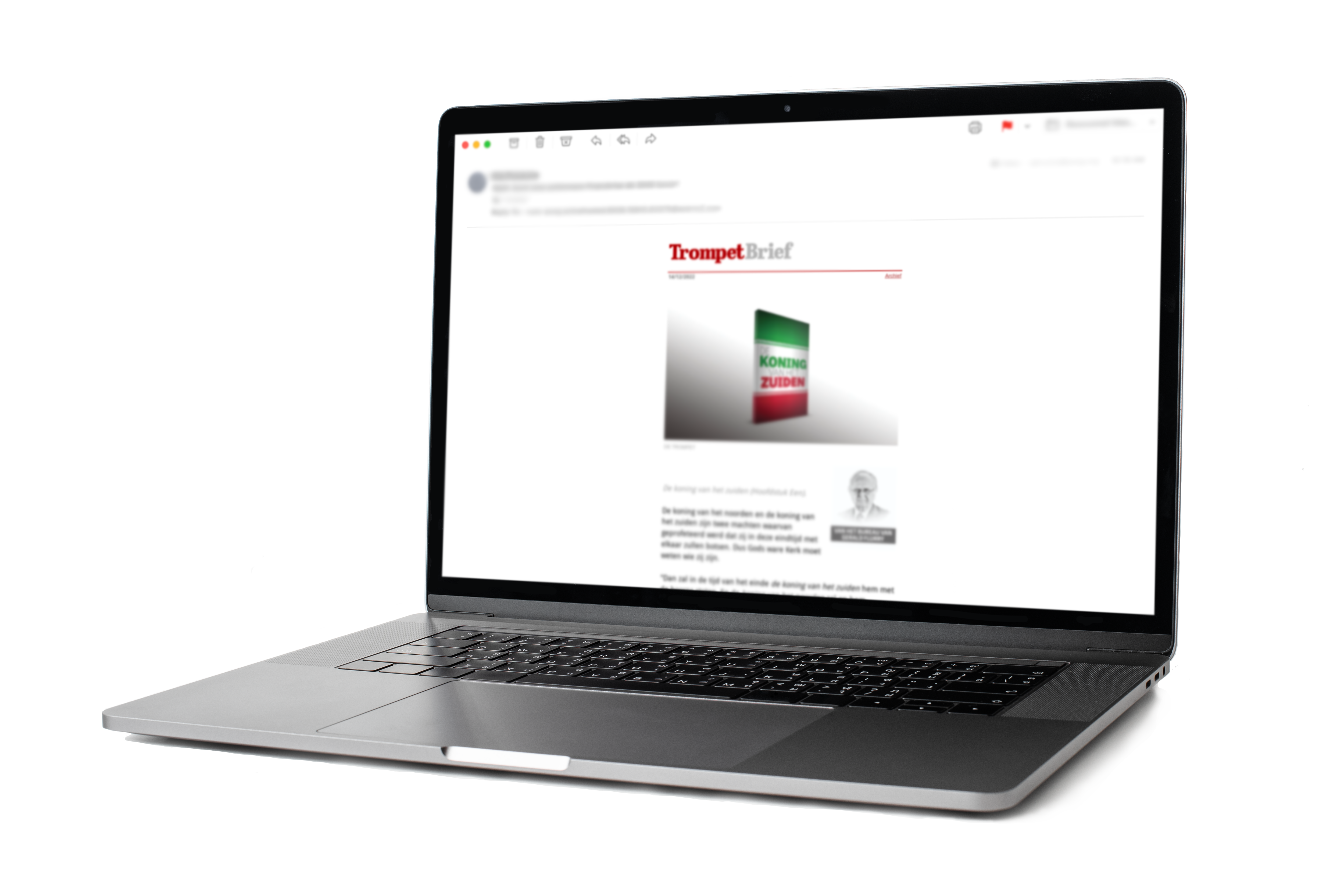
REESE ZOELLNER/TROMPET
Can COVID Cure Germany’s Religious Divide?
After Charlemagne “Christianized” Europe in the eighth and ninth centuries, Germany was predominantly Catholic. It took the helm of the Holy Roman Empire and ruled it off and on for almost a thousand years. German kings were crowned emperors by the Roman Catholic Church.
But Germany is also where Protestantism started. Its alliance with the Catholic Church suffered a blow in the 16th century, when Martin Luther launched the Reformation and transformed Germany’s religious landscape for centuries to come.
The Catholic Church and the Habsburg Empire tried to put a bloody end to the uprising, but the reformers formed their own military alliances. In the 17th century, the conflict culminated in the Thirty Years’ War.
The church’s efforts to reclaim its Protestant “daughters” never ceased. But as its alliance with German leaders broke, so too did the hope for a unified Christian body.
Around half of Germany’s population today still call themselves Christians, of whom the Roman Catholic Church can claim slightly more than a quarter. The rest adhere to Lutheran-Protestantism or Calvinism, united in the Evangelical Church in Germany.
The coronavirus has given the Catholic Church a rare opportunity. In this increasingly secular country, where the influence of its major churches has waned and denominational divisions seemed insurmountable, this virus has caused many to lay aside differences.
Bible prophecy says German religion will revive and reunite. Coronavirus is propelling the nation in that direction. For example, on April 12, the chairman of the Catholic German Bishops’ Conference and the chairman of the Council of the Protestant Church in Germany appeared together on the The Word for Sunday—a first in the tv program’s 65-year history. German news broadcaster ard said this unprecedented “ecumenical cooperation” happened “due to the special situation caused by the coronavirus pandemic.”
‘Germany United in Prayer’
One prominent politician who is rising in popularity is helping drive the denominations back together: Bavarian State Premier Markus Söder.
On March 22 Söder encouraged believers to “pray that Germany will not be hit too hard” by the virus (Trumpet translation throughout). Various Christian representatives responded by forming an ecumenical event on April 8 called “Germany Unites in Prayer.” Uniting Catholic, Protestant, Orthodox and Free Church Christians, the event was advertised as “the largest prayer campaign that Germany has ever seen.” In a video message at the event, Söder said community prayer connects denominations and religions. “Linking arms in faith, and the commitment to the values of the faith, is what connects us all,” he said. This event highlights that in crisis, people turn to religion and faith, and even put aside denominational differences and unite.
Germany’s basic law calls on German politicians to abide by the principle of state neutrality. It’s rare for a German politician to talk about his personal religion, even rarer to call on people to pray. Söder has done both, and his example is inspiring religious unity in Germany.
In 2017, Söder called himself a “fan of ecumenism.” He believes the various Christian denominations should work closer together. “Jesus Christ is the standard for me,” Söder told Münchner Kirchenzeitung. “He knew no denomination. I am always fascinated by Jesus Christ.”
Though Protestant, Söder maintains close ties with the Catholic Church. “I am a Lutheran,” he said, “and we are regarded as ‘half Catholics’ in the German Evangelical Church anyway.” When asked what he envies Catholics for, Söder said: “I like to be Protestant, and I appreciate my regional bishop, but we don’t have a holy father. This center of Christianity in Rome and the world church are particularly beautiful.”
Such comments from a rising political star are notable given the Bible’s prophecies of religious unification within Germany. Protestant and Free churches could follow Söder’s lead in submitting to Catholic rule. Whatever role Söder and other European leaders play, it is certain that Europe’s religious roots are about to give new life to an empire that was thought dead. And while these efforts appear to be about unity and goodwill, history and prophecy make clear that such developments are leading to a frightening end.
The Churches Will Unite
The late Herbert W. Armstrong proclaimed as far back as the 1930s that the Catholic Church would unite with its Protestant and Orthodox daughters. In October 1961, for example, his Plain Truth newsmagazine proclaimed: “Protestantism will be absorbed into the ‘mother church’—and totally abolished.”
He based this forecast on various Bible prophecies such as those in Revelation 13 and 17, and, in particular, Isaiah 47.
That chapter reads, “Come down, and sit in the dust, O virgin daughter of Babylon, sit on the ground: there is no throne, O daughter of the Chaldeans: for thou shalt no more be called tender and delicate” (verse 1). God is addressing not ancient Babylon, but the “daughter of Babylon.” A church in Bible prophecy is often depicted as a woman. For example, Ephesians 5:23-33 and Revelation 19:7 describe God’s true Church as the woman, or bride, who will marry Christ at His return. But Isaiah 47 is obviously not referring to God’s true Church. So who is the “daughter of Babylon”?
Daniel 2 prophesies of four world-ruling empires, starting with Babylon, —then followed by the Persian, Greek and Roman empires. Rome entered a church-state union with the Roman Catholic Church, which adopted the Babylonian mystery religion and cloaked it with Christianity (explained in detail in Mr. Armstrong’s book Mystery of the Ages; request a free copy).
Isaiah 47:1 shows that this church claims “a throne” but that God will strip it of that authority. The Catholic Church is the only church that claims a throne, and it even receives ambassadors from countries around the world.
The “daughter of Babylon” refers to the Roman Catholic Church.
This same church is depicted in Revelation 17 as a whore riding a beast, symbolizing the Roman Empire. This is how the Bible depicts the Holy Roman Empire. This church-state union has repeatedly risen throughout history, and its final resurrection is prophesied to rise in our time. As Mr. Flurry explains in his article in this issue (page 1), this church-state axis is now reemerging.
For this reason we have expected a religious revival in Germany. Mr. Flurry explained in 2011: “God does allow this church to gain control of this German-led European beast power. Expect the Catholic Church to become more vocal and for this church-state axis to become more evident” (Trumpet, February 2011).
The Bible also forecasts that Europe’s Christian churches are about to reunite.
Isaiah 47 continues, “And thou saidst, I shall be a lady for ever: so that thou didst not lay these things to thy heart, neither didst remember the latter end of it. Therefore hear now this, thou that art given to pleasures, that dwellest carelessly, that sayest in thine heart, I am, and none else beside me; I shall not sit as a widow, neither shall I know the loss of children” (verses 7-8). This refers to a time when the Catholic Church reunites with its Protestant daughters. The church will boast about overcoming “the loss of children,” or daughter churches.
Many have dismissed these prophecies, pointing to Europe’s drift toward secularism and the seemingly irreconcilable differences between Catholic and Protestant churches. But efforts toward ecumenism have made great strides in recent decades, and now the coronavirus crisis looks to be further healing the wound left by the Protestant Reformation.
Yet ultimately, ecumenical prayers and joint tv appearances will not be enough to bridge that gulf. “Indeed, biblical prophecy indicates that full unity will not be achieved purely voluntarily,” Mr. Flurry wrote. “At a certain point, the mother church will abandon its efforts to woo her daughters back by flatteries and instead revert to the age-old method of preserving ‘Christian’ unity by exerting physical force” (Trumpet, May 2007).
For five centuries, the Catholic Church has dreamed of reuniting with its daughter churches and regaining its former power. During the Dark Ages the church controlled Europe’s scientific research and educational system, and it led the empire into various crusades. But religious disunity has broken the church’s power over Europe. What will happen when the church regains that power?
The answer to that question can be surmised in part by the history of the Holy Roman Empire. Charlemagne was able to unite Europe not only under one government but also under one religion—the religion of the Roman Catholic Church. He promoted the Roman Catholic Church, converted “heretics” by the sword, and conquered Europe. That is how every resurrection of the Holy Roman Empire has operated. Unity in Europe comes with a price, and this price is blood.
The Catholic Church and Europe’s leaders well understand the history of the Holy Roman Empire. This empire has endeavored in the past to rule not only Europe but the whole world. In the last few centuries, Europe has been occupied largely by attempts to unite its continent. Once that unity is achieved, the Bible clearly says that the Holy Roman Empire will again seek world dominion.
To learn more about these prophecies, request a free copy of The Holy Roman Empire in Prophecy. It will help you understand the history of this bloody empire and reveal the Bible’s perspective on the evil it has caused. It will also show how Christ Himself will end it forever. At that point, the world will experience unity like nothing it has ever imagined.
